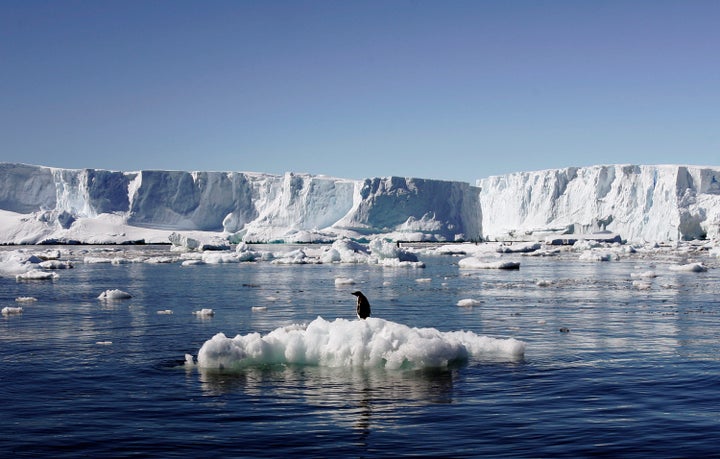A new paper says seas could rise more than six feet by 2100.
Many cities, including New York, Boston and Hong Kong, would be partially underwater.
The worst effects could be avoided if we slash or stop carbon emissions.

A new report nearly doubles previous predictions for sea level rise if global emissions continue unabated, portending a doomsday scenario for many of the world's coastal cities.
The study, published Wednesday in the journal Nature, looks toward the ice sheets of Antarctica, which by themselves may contribute more than three feet to sea level rise by 2100. Taken with other melting regions, including Greenland, seas could rise more than six feet, or two meters, by the end of the century.
David Pollard of Penn State University and co-author Rob DeConto said the "dire" predictions are nearly double those recently used by the Intergovernmental Panel on Climate Change as a worst-case scenario if humanity fails to curb emissions.
Dozens of low-lying metropolises, including Hong Kong, New York and Sydney, would be vulnerable to these rising seas. The authors warn that places like Boston could be faced with a sea level rise of more than five feet in the next century alone. Pollard said other potential effects, similar to the damaging storm surge caused by Hurricane Sandy, could contribute to the ballooning estimates for future flood losses.
A study published last month found sea levels were rising at the fastest rate since the founding of ancient Rome 2,800 years ago, spurred by the burning of fossil fuels. The authors of that report noted without the impact of humans, seas would be rising less rapidly, or possibly falling.
In an interview with The Guardian, DeConto said global warming could force "retreat" from cities, rather than the "engineering of defenses" to avoid the worst effects of sea level rise.
But the new models cited in Pollard and DeConto's study, which use historical data from 130,000 years ago and 3 million years ago, when temperatures were warmer and seas were higher, could make a fight against the tides all for naught. The authors expanded the sea level rise estimates to the year 2500, and found that Antarctica could cause more than 50 feet of sea level rise alone.
Despite the doomsday-esque prediction, the planet still holds some hope to address the growing concerns. DeConto noted in a statement that if humans are able to slash emissions, most of the Antarctic would remain frozen.
Last year's landmark climate accord forged in Paris could provide the groundwork toward limiting greenhouse gas emissions. World leaders have pledged to keep global warming below a threshold of 2 degrees Celsius. But the world isn't there yet, and global temperature records -- including the one set in February, the warmest such month on record -- continue to be broken.

